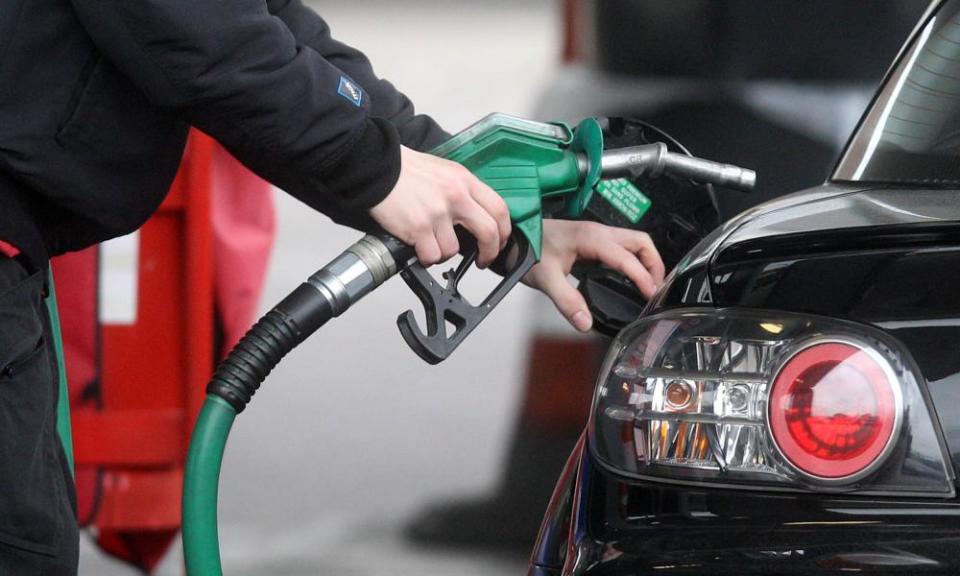UK inflation falls to lowest level in two years

UK inflation fell to its lowest level in nearly two years in December after a drop in petrol prices offered some respite to consumers who are reining in spending as Brexit looms.
The annual rate dipped to 2.1% from 2.3% in November, the weakest since January 2017, according to the Office for National Statistics. Economists said the drop reduced the likelihood that the Bank of England would raise interest rates in the near future.
Petrol prices fell to an eight-month low in December after a drop in the price of crude oil. The cost of a litre of petrol fell by 6.4p between November and December, compared with a rise of 0.8p a litre in the same period a year earlier.
Inflation is when prices rise. Deflation is the opposite – price decreases over time – but inflation is far more common.
If inflation is 10%, then a £50 pair of shoes will cost £55 in a year's time and £60.50 a year after that.
Inflation eats away at the value of wages and savings – if you earn 10% on your savings but inflation is 10%, the real rate of interest on your pot is actually 0%.
A relatively new phenomenon, inflation has become a real worry for governments since the 1960s.
As a rule of thumb, times of high inflation are good for borrowers and bad for investors.
Mortgages are a good example of how borrowing can be advantageous – annual inflation of 10% over seven years halves the real value of a mortgage.
On the other hand, pensioners, who depend on a fixed income, watch the value of their assets erode.
The government's preferred measure of inflation, and the one the Bank of England takes into account when setting interest rates, is the consumer price index (CPI).
The retail prices index (RPI) is often used in wage negotiations.
The cost of air and sea travel rose less than it did a year earlier, which also contributed to the fall in inflation. Clothing and footwear prices fell 0.9% in the year to December as retailers slashed prices in a bid to win customers over the crucial festive trading season.
Mike Hardie, head of inflation at the ONS, said: “Inflation eased mainly due to a big fall in petrol, with oil prices tumbling in recent months. Air fares also helped push down the rate, with seasonal prices rising less than they did last year. These were partially offset by small rises in hotel prices and mobile phone charges.”
The easing of consumer price rises in December took the inflation rate to just a touch above the Bank of England’s official target of 2%, giving policymakers breathing space to consider Brexit developments before making a move on interest rates.
Ruth Gregory, senior UK economist at consultancy Capital Economics, said: “With inflation within a whisker of its 2% target, the [Bank’s rate-setting] monetary policy committee will probably feel comfortable in waiting until Brexit uncertainty is resolved before moving again.”
The Bank of England has raised interest rates just twice since the depths of the financial crisis in 2009, once in November 2017 and again in August 2018, taking the benchmark cost of borrowing to 0.75%.
The drop in inflation – in line with economists’ forecasts – provides welcome relief for consumers, hit by higher prices in the aftermath of the 2016 Brexit vote as the sharp fall in the value of the pound pushed up the cost of goods imported from abroad. Inflation peaked at 3.1% in November 2017, well above average wage increases of 2.3% at the time.
Up
Olive oil, butter and margarine: +6.1% in December, compared with previous month.
Bread and cereals: +2.5%
Furniture and furnishings: +2.3%
Newspapers and magazines: +1.6%
CDs, DVDs and downloads: +1.3%
Down
Petrol, diesel and motor oil: -4.4%
Spirits: -3.6%
Beer: -3.3%
Computer software: -3.1%
Cosmetics, toiletries and personal care: -1.2%
Tobacco: -0.1%
Pay growth is now back above inflation, at 3%, but surveys have indicated that consumers are taking a more cautious approach to spending as they are uncertain about what impact Brexit will have on household finances.
Howard Archer, chief economic adviser to the forecasting group EY Item Club, said inflation was likely to fall further as a result of lower oil prices and Ofgem’s price cap, which is expected to put some downward pressure on domestic energy prices from January.
Archer said: “Consumer price inflation could dip below 2% in January and stay below that level for much if not all of 2019. We see inflation averaging 1.8% over 2019, and it could get as low as 1.6%.”

 Yahoo Finance
Yahoo Finance 